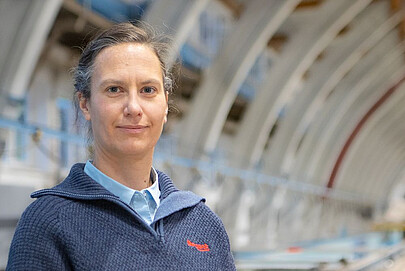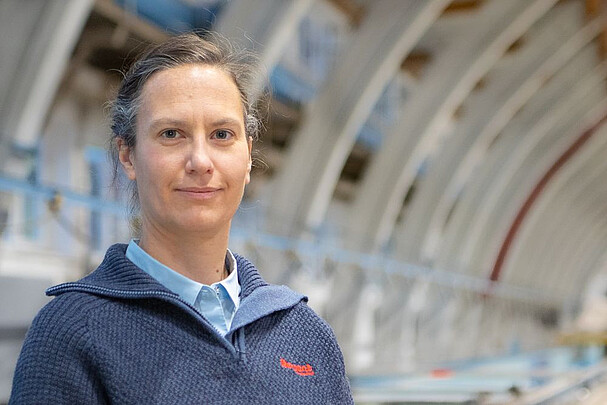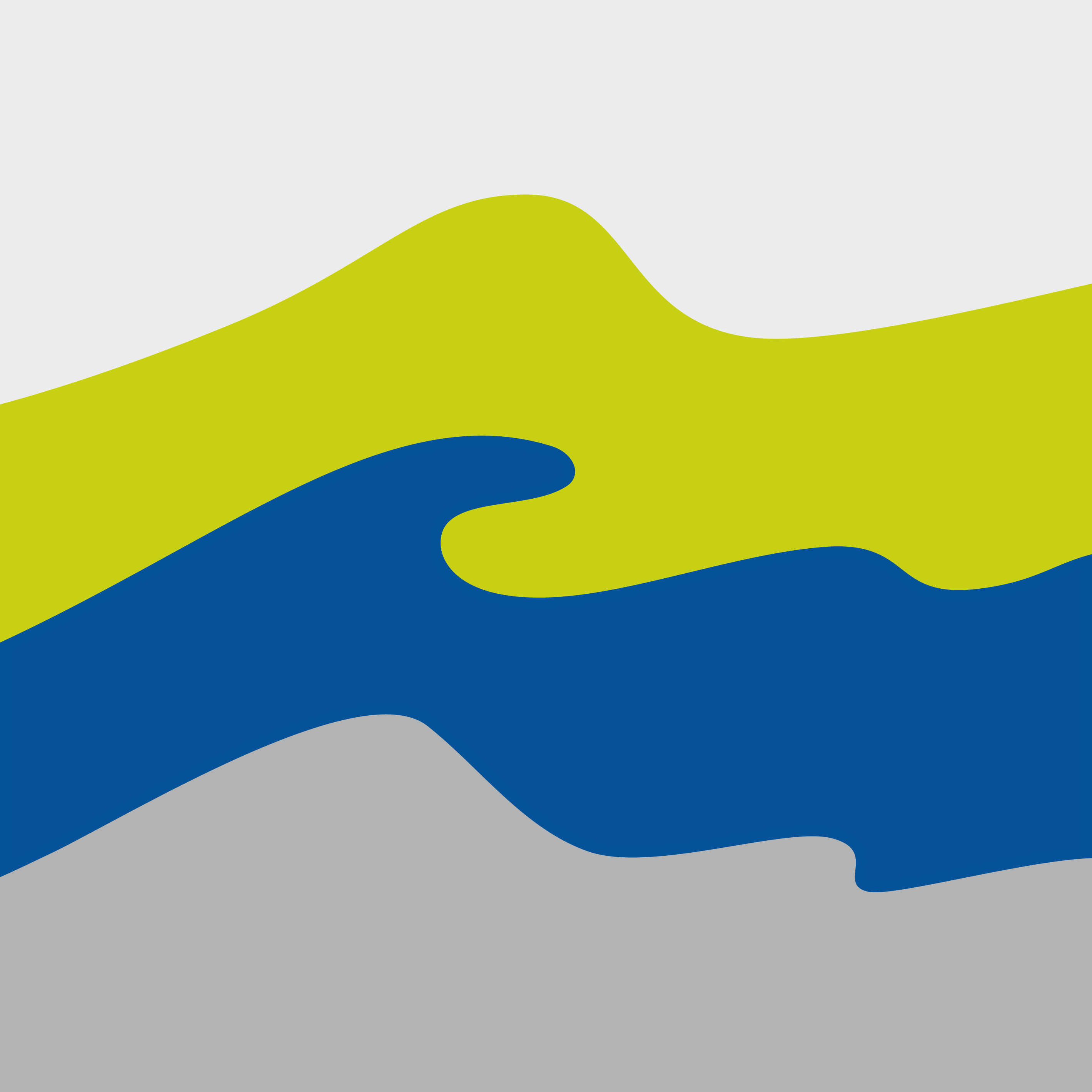Wir nutzen hydraulische Modellversuche und Feldstudien, um gezielt die Wechselwirkung zwischen sesshaften Organismen im Küstenraum (Salzwiesen, Seegras, Muschelbänke) und Hydrodynamik zu untersuchen. Diese Wechselwirkung bewirkt Wellen- und Strömungsdämpfung sowie Sedimentstabilisierung, was relevante Ökosystemleistungen für den Küstenschutz sind. Ziel ist es einerseits die Prozesse zu verstehen und andererseits diese Ökosystemleistungen zu bemessen, um sie in Küstenschutzstrategien berücksichtigen zu können.
Zusätzlich wird untersucht, wie traditionelle Küstenschutzbauwerke (z.B. Deiche, Schutzdünen) umgestaltet und neue Ökosysteme geschaffen werden können, um weitere Ökosystemleistungen wie ästhetischen Mehrwert, Biodiversität oder Kohlenstoffspeicherung zu erbringen. Dies erfordert eine interdisziplinäre Herangehensweise, so dass neben Küsteningenieurwesen auch Elemente aus Fernerkundung, Ökologie und Geoökologie sowie den Materialwissenschaften Anwendung finden.
Publikationen
-
Klicken Sie hier um eine Liste der Publikationen zu sehen, die in diesem Forschungsschwerpunkt entstanden sind
Showing results 1 - 20 out of 56
Hitzegrad J, Rentsch L, Hoffmann TK, Paul M, Windt C, Schlurmann T et al. Wave-induced hydrodynamics of biogenic structures in the central Wadden Sea: Implications of the transformation from mussel beds to oyster reefs for wave attenuation. Coastal engineering. 2025 Jul 15;200:104763. Epub 2025 Apr 18. doi: 10.1016/j.coastaleng.2025.104763Kamperdicks L, Lattuada M, O Corcora T, Schlurmann T, Paul M. Enhancing seagrass restoration success: Detecting and quantifying mechanisms of wave-induced dislodgement. Science of the Total Environment. 2025 Jan 10;959:178055. Epub 2024 Dec 21. doi: 10.1016/j.scitotenv.2024.178055Michalzik J, Paul M, Schlurmann T. Response of grass covers for dikes to coastal stressors during establishment phase. Ecological engineering. 2025 Feb;212:107488. Epub 2024 Dec 12. doi: 10.1016/j.ecoleng.2024.107488Spröer F, Lojek O, Bischoff C, Bunzel D, Paul M, Goseberg N. High fidelity numerical modelling of European brushwood groyne fluid-structure-interaction: Parametrization through Darcy–Forchheimer, reflection and transmission coefficients. Coastal engineering. 2025 Apr 15;197:104659. Epub 2024 Nov 28. doi: 10.1016/j.coastaleng.2024.104659Huang K, Hu Z, Liu Z, Paul M, Xu T, Suzuki T. Pinpointing the role of wave period in vegetation induced wave attenuation. Coastal engineering. 2024 Oct;193:104568. Epub 2024 Jul 4. doi: 10.1016/j.coastaleng.2024.104568Kamperdicks L, Lattuada M, Corcora TO, Schlurmann T, Paul M. Data set: Seagrass Dislodgement Under Waves (Experiment). 2024. doi: 10.25835/NBS95S4OKerpen NB, Larsen BE, Schlurmann T, Paul M, Guler HG, Goral KD et al. Microplastic retention in marine vegetation canopies under breaking irregular waves. Science of the Total Environment. 2024 Feb 20;912:169280. Epub 2023 Dec 19. doi: 10.1016/j.scitotenv.2023.169280Pfennings K, Hoffmann TK, Hitzegrad J, Paul M, Goseberg N, Wehrmann A. Beyond annual metrics: Linking seasonal population dynamics to vertical oyster reef growth. Ecology and evolution. 2024 Sept;14(9):e70238. doi: 10.1002/ece3.70238Hoffmann TK, Pfennings K, Hitzegrad J, Brohmann L, Welzel M, Paul M et al. Low-cost UAV monitoring: insights into seasonal volumetric changes of an oyster reef in the German Wadden Sea. Frontiers in Marine Science. 2023 Oct 9;10:1245926. doi: 10.3389/fmars.2023.1245926Kempa D, Schönebeck JM, Paul M, Steinigeweg CS. Ökosystemstärkender Küstenschutz im Reallabor: Forschen für eine „Gute Küste Niedersachsen“. Nachrichten der ARL. 2023 Sept;53(01/2023):25-30.Rajaie M, Nistor I, Rennie CD, Azimi AH, Hoffmann T. Turbulent Bores-Induced Scour and Pore Pressure Variations Around a Vertical Structure. In Cox D, editor, Proceedings of 37th Conference on Coastal Engineering: Sydney, Australia, 2022. Vol. 37. Coastal Engineering Research Council. 2023. (Proceedings of the Coastal Engineering Conference; 37). doi: 10.9753/icce.v37.sediment.41Steinigeweg CS, Paul M, Kleyer M, Schröder B. Conquering New Frontiers: The Effect of Vegetation Establishment and Environmental Interactions on the Expansion of Tidal Marsh Systems. Estuaries and coasts. 2023 Sept;46(6):1515-1535. Epub 2023 Jun 7. doi: 10.1007/s12237-023-01220-ySteinigeweg CS, Löbel S, Schröder B, Schoutens K, Reents S, Evans BR et al. Plant trait-mediated drag forces on seedlings of four tidal marsh pioneer species. Frontiers in Marine Science. 2023 May 30;10:1172492. doi: 10.3389/fmars.2023.1172492Villanueva R, Paul M, Schlurmann T. Wave dynamics alteration by discontinuous flexible mats of artificial seagrass can support seagrass restoration efforts. Scientific reports. 2023 Nov 8;13:19418. doi: 10.1038/s41598-023-46612-zVillanueva Granados RA, Paul M, Schlurmann T. Flexible anchored mats of artificial seagrass for restoration. 2023 Jun 2. Epub 2023 Jun 2. doi: 10.21203/rs.3.rs-2957238/v1Carus J, Arndt C, Bouma T, Schröder B, Paul M. Effect of artificial seagrass on hydrodynamic thresholds for the early establishment of Zostera marina. Journal of Ecohydraulics. 2022;7(1):17-27. Epub 2020 Dec 17. doi: 10.1080/24705357.2020.1858197Hitzegrad J, Brohmann L, Pfennings K, Hoffmann TK, Eilrich AK, Paul M et al. Oyster Reef Surfaces in the Central Wadden Sea: Intra-Reef Classification and Comprehensive Statistical Description. Frontiers in Marine Science. 2022 Mar 9;9:808018. doi: 10.3389/fmars.2022.808018LG G, Maza M, Garcia-Maribona J, Lara JL, Suzuki T, Argemi Cierco M et al. Living on the edge: How traits of ecosystem engineers drive bio-physical interactions at coastal wetland edges. Advances in water resources. 2022 Aug;166:104257. Epub 2022 Jun 17. doi: 10.1016/j.advwatres.2022.104257Paul M, Bischoff C, Koop-Jakobsen K. Biomechanical traits of salt marsh vegetation are insensitive to future climate scenarios. Scientific reports. 2022 Dec 8;12(1):21272. doi: 10.1038/s41598-022-25525-3Paul M, Bischoff C, Koop-Jakobsen K. Coastal protection capacity of saltmarshes remains high in the future. 2022. doi: 10.5194/egusphere-egu22-2520
Kontakt


30167 Hannover





